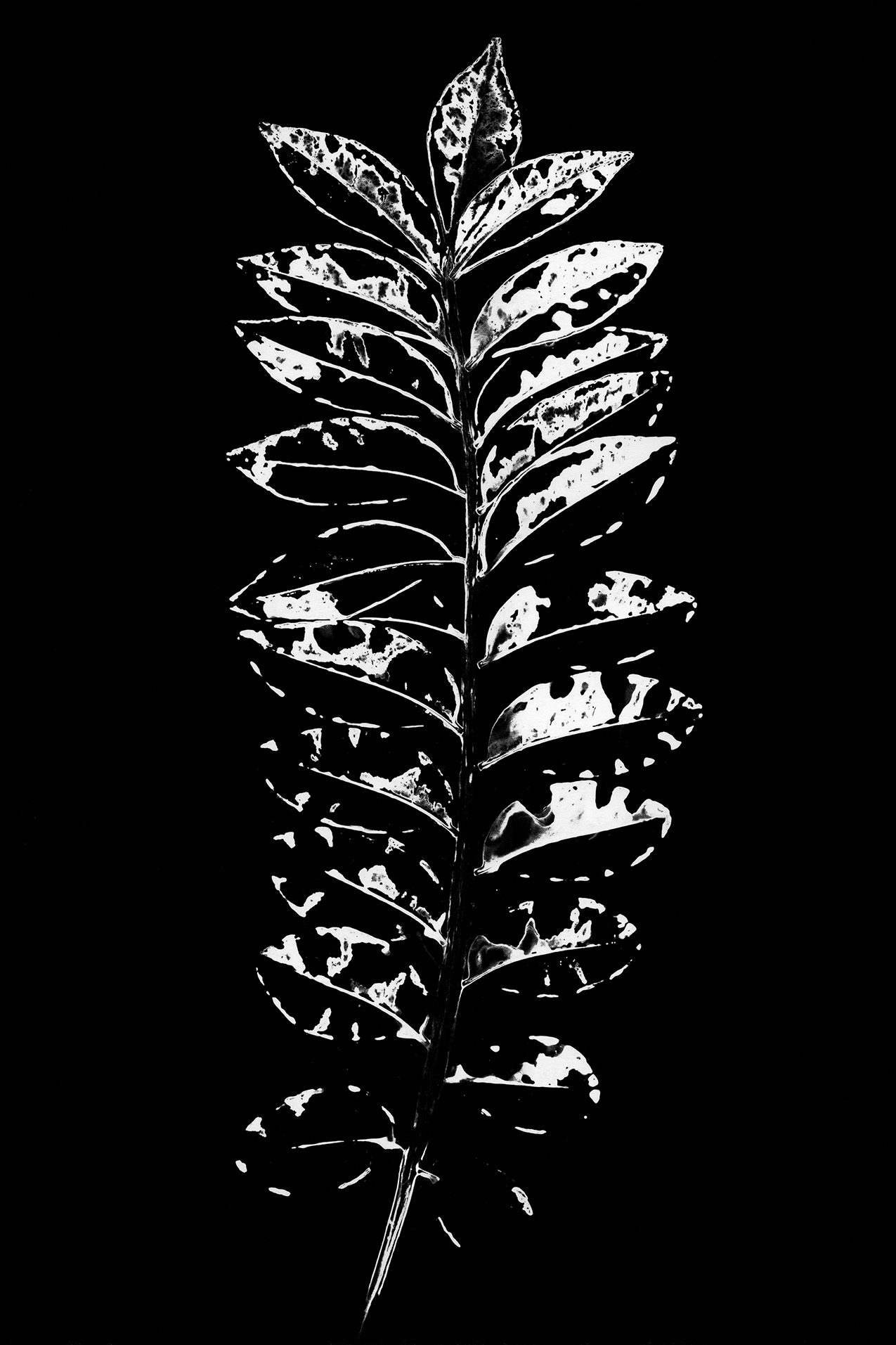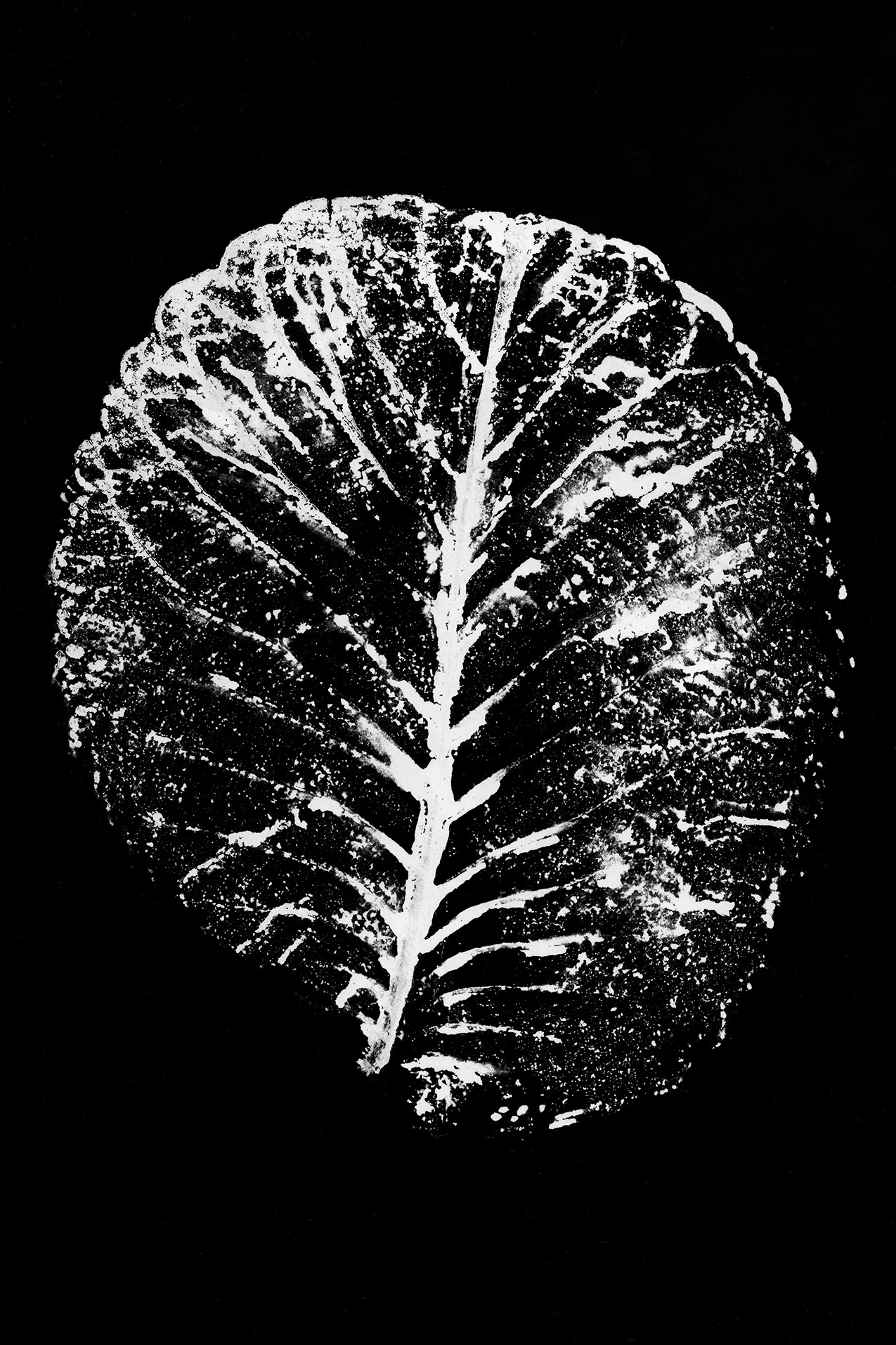


The series “Backlight” is composed of leaves collected from the vegetation of the Cerrado Biome, delimited in a space of four hectares located in the municipality of Sete Lagoas, State of Minas Gerais, Brazil. The iconic shape of the leaves of this biome, fixed on paper, are like fingerprints, fragments of a plant identity.
Occupying 24% of the national territory, the Cerrado Biome is the second largest vegetation type in Brazil after the Amazon, and the world’s richest tropical savannah in biodiversity. Comprising three of the largest hydrographic basins in South America, it concentrates no less than a third of the national biodiversity and 5% of the world’s flora and fauna.
Source: Ministry of Agriculture, Livestock and Food Supply, Embrapa – Brazilian Agricultural Research Corporation
Photogram Technique
Fotograma is a technique of image production without the use of camera obscura and having as a medium the light for the formation of the image. Simply place an object on photosensitive media and expose to light. After the chemical processing, a negative image of the contour of the objects remains. A pioneer in photographic development, William Henry Fox Talbot produced images before even the “invention” of this technique. Anna Atkins, the British botanist, was the first person to realize the potential of photography in scientific works, using the cyanotype process for the production of her images, producing the first picture book in history with photographic images in 1843, “Photographs of British Algae: Cyanotype Impressions.”
